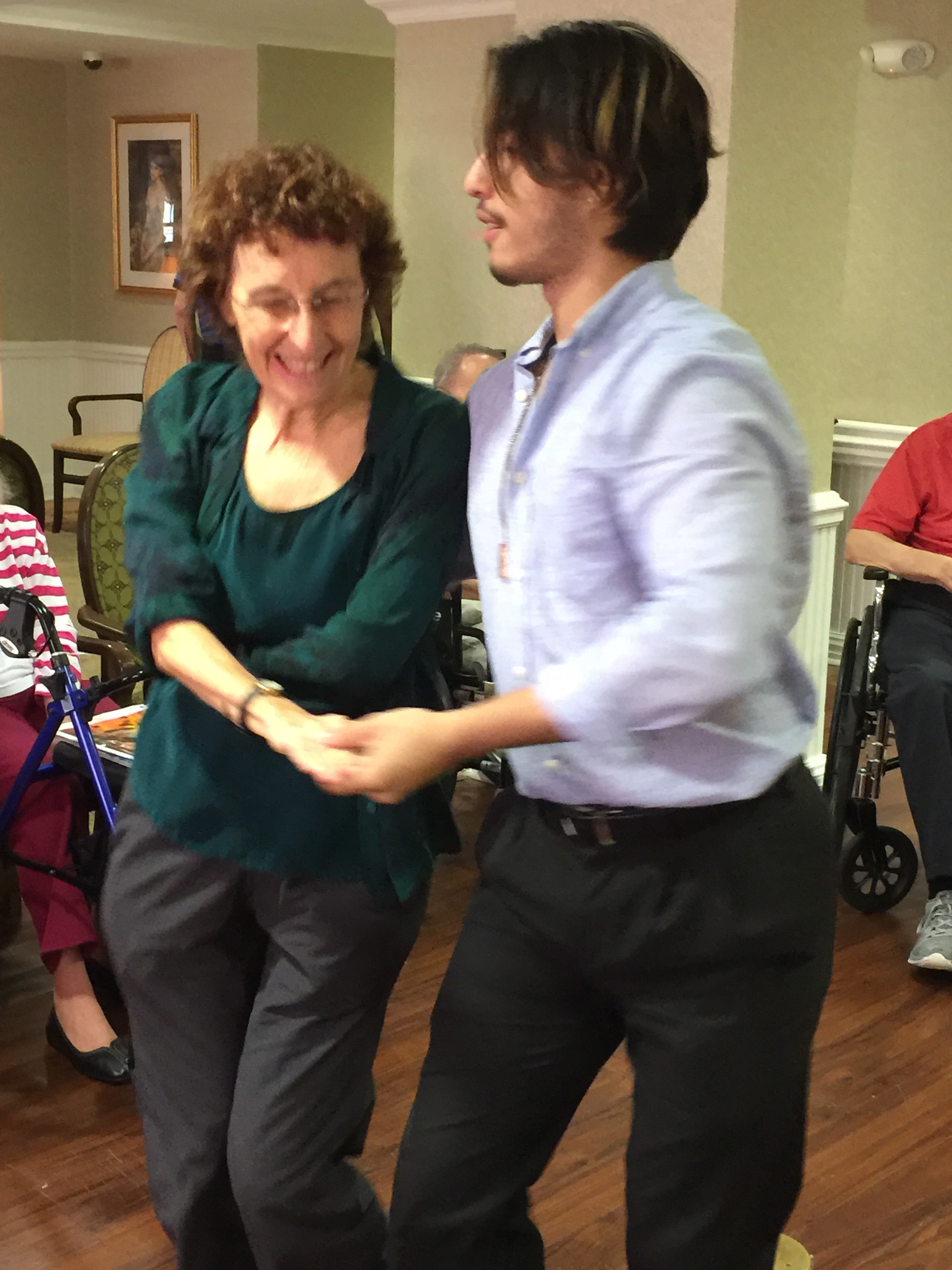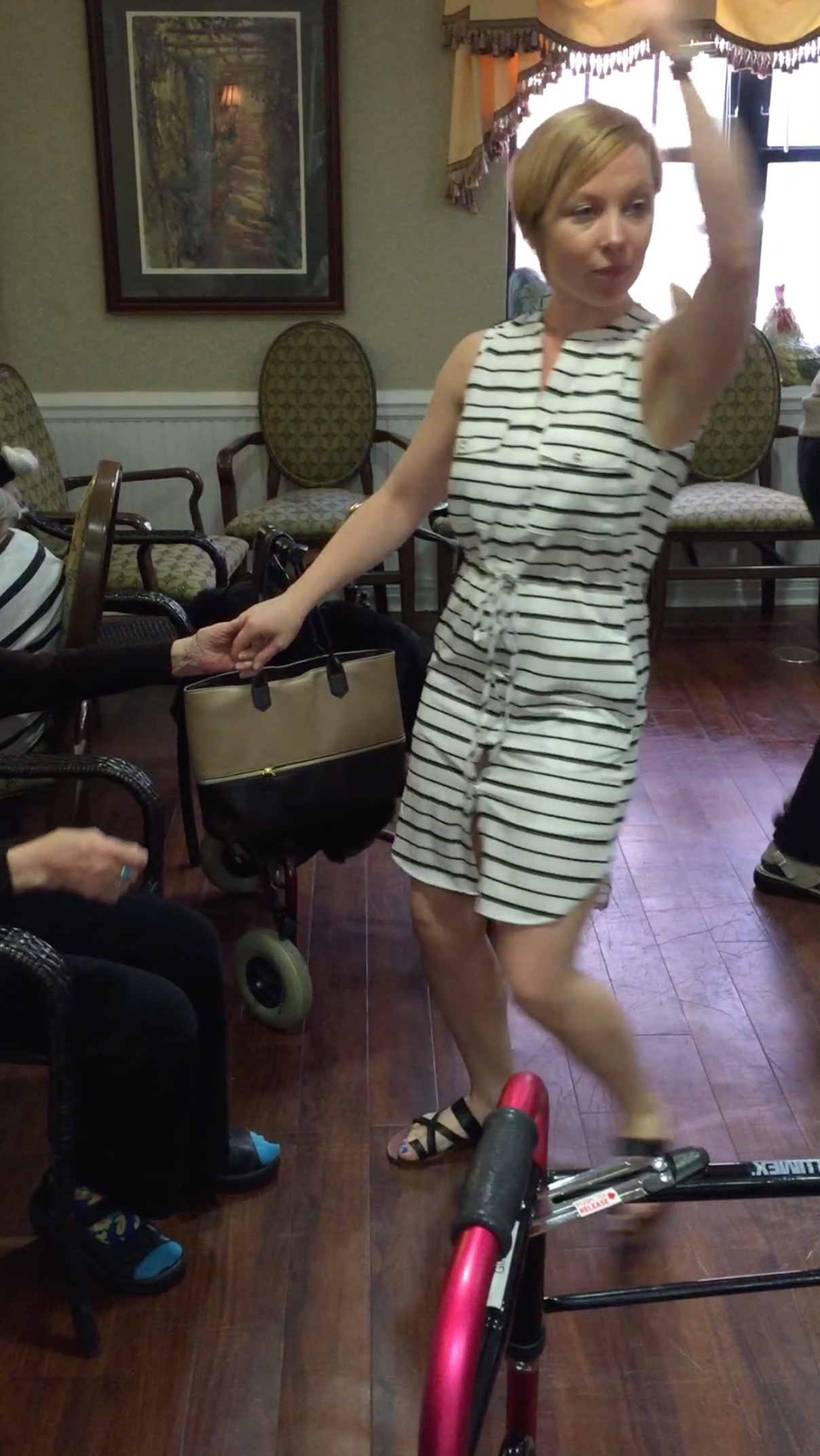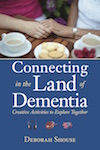Posts Tagged ‘partner dancing’
Shall We Dance?
 Normally, I do not like being the center of attention. But when Sebastian Tomkowski asked me to dance the merengue, I said yes. Actually, my first reply was, "I can't dance." But Sebastian assured me he would guide me, literally, every step of the way.
Normally, I do not like being the center of attention. But when Sebastian Tomkowski asked me to dance the merengue, I said yes. Actually, my first reply was, "I can't dance." But Sebastian assured me he would guide me, literally, every step of the way.
Sebastian is one of the dancers working with Rhythm Breaks Cares (RBC), a non-profit that specializes in bringing the energy and joy of ballroom dance to people who are living with dementia. We were lucky to experience one of RBC's sessions in a New York City care facility.
When everyone was gathered in a circle, Stine Moen, one of RBC's founders, put on some Frank Sinatra tunes. Instantly, one woman danced her way into the room. Her movements were graceful and stylish. When Sebastian invited her to waltz, she readily accepted.
Stine asked a seated women if she'd like to dance. The woman said, "I have this walker and I can't dance with it."
"You can," Stine assured her. "You can use your walker and you and I can dance together."
The woman demurred and sat swaying to the music. But when Stand by Me started playing, she hoisted herself to her feet, grabbed the walker, and began moving rhythmically around the room.
 Two men sat in the circle, seemingly not registering the music. When Stine asked if they'd like to dance, one man held out his hand. Stine took his hand and let him guide the movements, while she made fancy arm gestures that looked as though they were waltzing in an elegant ballroom.Click here for dancing ideas.
Two men sat in the circle, seemingly not registering the music. When Stine asked if they'd like to dance, one man held out his hand. Stine took his hand and let him guide the movements, while she made fancy arm gestures that looked as though they were waltzing in an elegant ballroom.Click here for dancing ideas.
One woman sat stock still, but sang along when the song "Fever" played.
"I used to be a singer and my husband played the piano," she told me, when I sat beside her. "But I don't remember the words." She then proceeded to croon along with "I've Got You Under My Skin."
The energy from the music and movement seemed to engage everyone. Even a man who seemed immobile, his mouth tight, his hands clenched up near his face, gradually softened his expression and lowered his hands to his lap.As for me, I reveled in the experience, dancing with the residents or smiling and moving our hands in time to the music. And of course, I loved my once-in-a-lifetime merengue experience.
I asked Stine to offer a few tips for care partners who wanted more movement in their lives.
Here are her suggestions.
"We always start with the music." says Stine. "That sets the tone."
Once the music is playing, if possible, make eye contact. Then smile and hold out a hand. Move in ways appropriate to your partner’s abilities.
Celebrate every movement. Even swaying your arms together to the music is a form of dance.
“It's not about getting the steps right,” Stine says. “It's about connecting through music and movement.”
Want to learn more about the power of dance? Visit the RBC website. Good news—RBC offers training for qualified dancers, so they can bring this exciting program to their own communities.
Click here for additional tips from Stine.
Click here for tips from Sebastian.
Read more about creative programs in Connecting in the Land of Dementia: Creative Activities to Explore Together. Order your copy from your favorite independent or online bookstore.
Deborah Shouse is the author of Connecting in the Land of Dementia: Creative Activities to Explore Together and Love in the Land of Dementia: Finding Hope in the Caregiver’s Journey.


